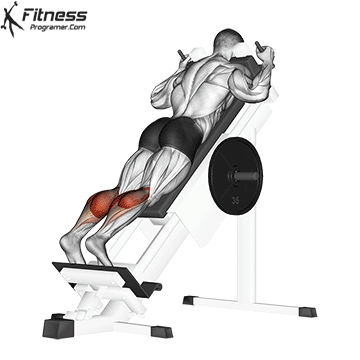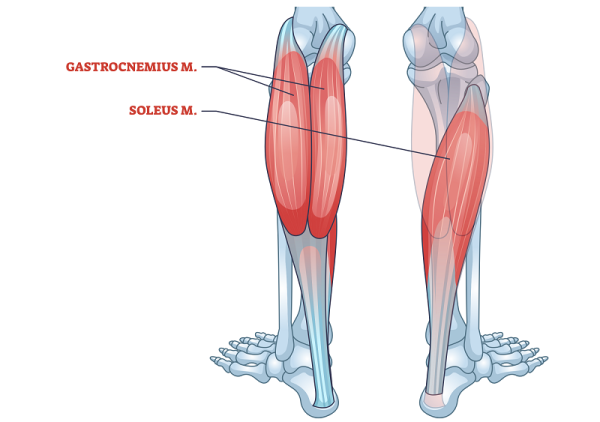Overview
The hack squat calf raise is an isolation exercise performed on the hack squat machine that targets the calf muscles. The foot platform’s incline enables a strong stretch and increased time under tension compared to flat-ground standing calf raises. This setup also encourages controlled form and reduces balance demands.
How to Perform the Hack Squat Calf Raise

Setup: Stand inside the hack squat machine with your shoulders under the pads, and feet placed high on the foot platform. Keep your toes pointing straight ahead or slightly out.
Position Feet for Full Stretch: The balls of your feet should rest on the edge of the platform so your heels can move freely into a deep stretch without slipping.
Unlock the Machine: Extend your legs fully to lift the carriage and release the safety handles.
Begin the Raise: With knees fully extended, press through the forefeet to lift your heels as high as possible.
Pause and Contract: Hold at the top for 1–2 seconds, emphasizing a peak contraction in the calves.
Lower Slowly: Let your heels drop below the level of the platform to achieve a full stretch in the gastrocnemius and soleus.
Repeat: Perform the desired number of reps, maintaining control throughout.
Tips for Proper Form
Keep your knees straight but not locked to emphasize the gastrocnemius.
Avoid bending at the hips or knees; this keeps the focus on the calves, not the quads.
Move slowly and deliberately, especially during the eccentric (lowering) phase.
Ensure feet are placed securely—use rubber soles or grip tape if needed.
Squeeze at the top for 1–2 seconds to maximize muscle fiber recruitment.
Common Mistakes to Avoid
Letting the knees bend, which shifts load away from the gastrocnemius.
Using partial range of motion, limiting stretch and contraction.
Bouncing off the bottom, which removes muscular tension and risks joint strain.
Allowing feet to slip, which can reduce effectiveness or lead to injury.
Overloading too early, compromising control and stability.
Benefits of the Hack Squat Calf Raise
Heavily loads the calves with minimal balance demands.
Targets both gastrocnemius and soleus through full range plantarflexion.
Improves ankle joint integrity, essential for power and speed athletes.
Allows progressive overload, often missed in bodyweight calf work.
Enhances lower-limb endurance in runners and field athletes.
Minimizes upper body fatigue, enabling focus purely on lower leg activation.
How to Incorporate Into Your Routine
For Beginners: Use light weight and high reps (2–3 sets of 8–10) to build motor control.
For Hypertrophy: Perform 3–4 sets of 10–15 reps with moderate to heavy load and slow eccentrics.
For Strength: Use 3–4 sets of 6–10 reps with higher weight and a 1–2 second pause at peak contraction.
For General Fitness: Add 2–3 sets to leg day to improve balance, posture, and gait strength.
For Athletic Performance: Use as part of a posterior chain conditioning session to support sprinting mechanics and ankle stiffness.
Hack Squat Calf Raise: Muscles Worked

Frequently Asked Questions
What’s the difference between this and a standing calf raise machine?
Both exercises train similar muscles, but the hack squat platform allows for greater heel drop and less torso involvement, increasing focus on the calves.
Should I keep my knees straight during the exercise?
Yes. Keeping the knees extended emphasizes the gastrocnemius. For more soleus engagement, try the seated calf raise instead.
Can I do this without a hack squat machine?
You can replicate it using a leg press machine or standing calf raise platform, but the angled nature of the hack squat machine offers a unique combination of full stretch and support.
How often should I include this exercise?
Calves respond well to frequency. 2–3 times per week is common for strength or size-focused programs.
What footwear is best?
Flat-soled shoes or barefoot-style trainers improve contact with the platform and reduce slipping. Avoid thick-cushioned running shoes.
